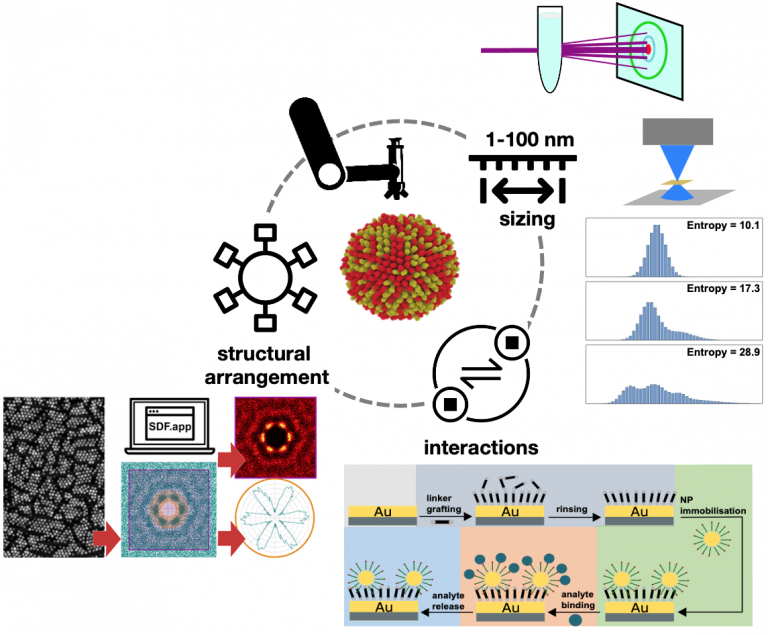A multitude of nanomaterials properties closely depend on structural dimensions and chemical motifs displayed on the surface. In the case of nanoparticles, colloidal stability, bio-distribution as well as catalytic, optical and electric properties are all affected by their spatial dimensions while the chemical nature of the stabilising ligand shell structure plays an important role for solubility, chemical reactivity, and binding affinity.
Our group has made a number of contributions towards the characterisation of physical and chemical properties of nanoparticles, their structural arrangement and their interaction with external stimuli. Many of our tools are available as standalone software, imageJ plugins or excel macros. Please see also our GitHub page (link).

Key publications:
Comparative characterisation of non-monodisperse gold nanoparticle populations by X-ray scattering and electron microscopy (link)
Y Yang, S Liao, Z Luo, R Qi, N MacFhionnlaoich, F Stellacci, S Guldin
Nanoscale, vol. 12, pp. 12007 – 12013 (2020).
Information entropy as a reliable measure of nanoparticle dispersity (link)
N MacFhionnlaoich, S Guldin
Chemistry of Materials, vol. 32, pp. 3701 – 3706 (2020).
Application of the Spatial Distribution Function to colloidal ordering (link)
N MacFhionnlaoich, R Qi, S Guldin
Langmuir, vol. 35, pp. 16605 – 16611 (2019).
Multi-dimensional characterization of mixed ligand nanoparticles using small angle neutron scattering (link)
Z Luo, Y Yang, A Radulescu, J Kohlbrecher, TA Darwish, QK Ong, S Guldin, F Stellacci
Chemistry of Materials, vol. 31, pp. 6750 – 6758 (2019).
Probing the interaction of nanoparticles with small molecules in real time via quartz crystal microbalance monitoring (link)
Y Yang, G Poss, N Nianias, Y Weng, R Qi, H Zheng, E Kay, S Guldin
Nanoscale, vol. 11, pp. 11107 – 11113 (2019).
 Close
Close

